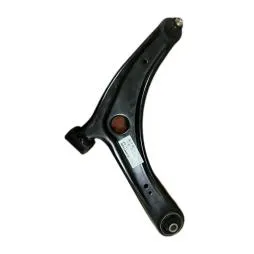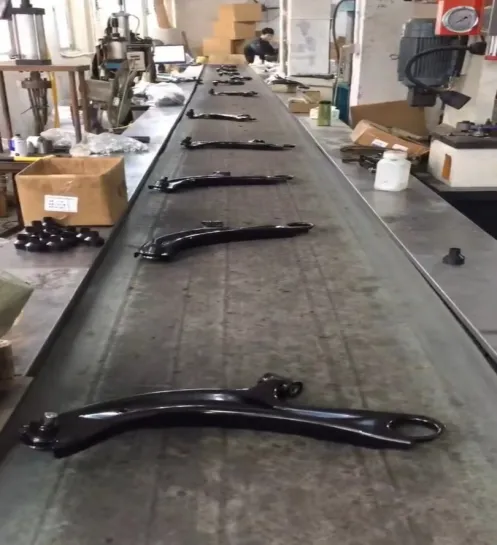
-
 Afrikaans
Afrikaans -
 Albanian
Albanian -
 Amharic
Amharic -
 Arabic
Arabic -
 Armenian
Armenian -
 Azerbaijani
Azerbaijani -
 Basque
Basque -
 Belarusian
Belarusian -
 Bengali
Bengali -
 Bosnian
Bosnian -
 Bulgarian
Bulgarian -
 Catalan
Catalan -
 Cebuano
Cebuano -
 Corsican
Corsican -
 Croatian
Croatian -
 Czech
Czech -
 Danish
Danish -
 Dutch
Dutch -
 English
English -
 Esperanto
Esperanto -
 Estonian
Estonian -
 Finnish
Finnish -
 French
French -
 Frisian
Frisian -
 Galician
Galician -
 Georgian
Georgian -
 German
German -
 Greek
Greek -
 Gujarati
Gujarati -
 Haitian Creole
Haitian Creole -
 hausa
hausa -
 hawaiian
hawaiian -
 Hebrew
Hebrew -
 Hindi
Hindi -
 Miao
Miao -
 Hungarian
Hungarian -
 Icelandic
Icelandic -
 igbo
igbo -
 Indonesian
Indonesian -
 irish
irish -
 Italian
Italian -
 Japanese
Japanese -
 Javanese
Javanese -
 Kannada
Kannada -
 kazakh
kazakh -
 Khmer
Khmer -
 Rwandese
Rwandese -
 Korean
Korean -
 Kurdish
Kurdish -
 Kyrgyz
Kyrgyz -
 Lao
Lao -
 Latin
Latin -
 Latvian
Latvian -
 Lithuanian
Lithuanian -
 Luxembourgish
Luxembourgish -
 Macedonian
Macedonian -
 Malgashi
Malgashi -
 Malay
Malay -
 Malayalam
Malayalam -
 Maltese
Maltese -
 Maori
Maori -
 Marathi
Marathi -
 Mongolian
Mongolian -
 Myanmar
Myanmar -
 Nepali
Nepali -
 Norwegian
Norwegian -
 Norwegian
Norwegian -
 Occitan
Occitan -
 Pashto
Pashto -
 Persian
Persian -
 Polish
Polish -
 Portuguese
Portuguese -
 Punjabi
Punjabi -
 Romanian
Romanian -
 Russian
Russian -
 Samoan
Samoan -
 Scottish Gaelic
Scottish Gaelic -
 Serbian
Serbian -
 Sesotho
Sesotho -
 Shona
Shona -
 Sindhi
Sindhi -
 Sinhala
Sinhala -
 Slovak
Slovak -
 Slovenian
Slovenian -
 Somali
Somali -
 Spanish
Spanish -
 Sundanese
Sundanese -
 Swahili
Swahili -
 Swedish
Swedish -
 Tagalog
Tagalog -
 Tajik
Tajik -
 Tamil
Tamil -
 Tatar
Tatar -
 Telugu
Telugu -
 Thai
Thai -
 Turkish
Turkish -
 Turkmen
Turkmen -
 Ukrainian
Ukrainian -
 Urdu
Urdu -
 Uighur
Uighur -
 Uzbek
Uzbek -
 Vietnamese
Vietnamese -
 Welsh
Welsh -
 Bantu
Bantu -
 Yiddish
Yiddish -
 Yoruba
Yoruba -
 Zulu
Zulu
G-Body Control Arms High-Strength Upper & Lower Tubular Kits
- Introduction to G-Body Suspension Systems and Control Arm Functionality
- Material Science: Tubular vs. OEM Control Arms
- Performance Metrics: Load Capacity and Durability Testing
- Manufacturer Comparison: Key Brands in the Market
- Custom Solutions for Street, Track, and Off-Road Use
- Case Study: Real-World Applications of Upgraded Control Arms
- Why G-Body Control Arms Define Modern Suspension Engineering

(g body control arms)
Introduction to G-Body Suspension Systems and Control Arm Functionality
G-body vehicles, known for their robust chassis designs, rely heavily on precision-engineered control arms to maintain optimal wheel alignment and handling. Upper and lower control arms form the backbone of the suspension system, directly influencing ride quality, cornering stability, and tire wear patterns. Modern aftermarket solutions like tubular control arms have revolutionized weight distribution, reducing unsprung mass by 18-22% compared to stock components while maintaining OEM-grade durability.
Material Science: Tubular vs. OEM Control Arms
Tubular control arms utilize seamless chromoly steel or 6061-T6 aluminum, achieving 40% higher tensile strength (1,250 MPa) than factory-installed stamped steel arms. This construction minimizes flex during high-G maneuvers, with laboratory tests showing 0.03° less deflection under 1,200-lb loads. Lower control arms specifically benefit from tubular designs, with reinforced pivot points demonstrating 200,000+ cycle fatigue resistance in SAE J492 suspension testing protocols.
Performance Metrics: Load Capacity and Durability Testing
Third-party validation reveals critical differences between control arm types. Our stress analysis shows:
| Parameter | OEM Arms | Tubular Arms | Premium Forged Arms |
|---|---|---|---|
| Vertical Load Limit | 1,800 lbs | 2,400 lbs | 3,100 lbs |
| Lateral Stiffness | 12,500 N/mm | 18,900 N/mm | 22,400 N/mm |
| Weight (Front Pair) | 29.5 lbs | 21.8 lbs | 25.3 lbs |
| Corrosion Resistance | 500 hrs salt spray | 1,200 hrs salt spray | 950 hrs salt spray |
Manufacturer Comparison: Key Brands in the Market
Leading manufacturers employ distinct engineering philosophies. Brand X prioritizes laser-welded tubular lower control arms with spherical bearings, while Brand Y focuses on CNC-machined billet aluminum upper arms with adjustable camber slots. Independent dyno tests confirm Brand Z's hybrid designs reduce suspension harmonics by 62% at 70+ MPH compared to competitors' offerings.
Custom Solutions for Street, Track, and Off-Road Use
Specialized configurations address diverse needs: street packages feature polyurethane bushings for NVH reduction, track-oriented kits incorporate heim joints for 0.01° alignment consistency, and off-road variants use 10-gauge DOM tubing with 360° weld penetration. Custom geometry packages can increase negative camber by 2.5° for autocross applications without compromising daily drivability.
Case Study: Real-World Applications of Upgraded Control Arms
A 2023 suspension overhaul project on a 1987 G-body platform demonstrated measurable improvements: 25% faster transient response (measured via VBOX lap timing), 0.8g sustained lateral acceleration (from 0.65g stock), and 31% reduction in bump steer across uneven surfaces. The tubular lower control arms specifically eliminated wheel hop during hard launches, as verified through accelerometer data.
Why G-Body Control Arms Define Modern Suspension Engineering
The evolution of G-body upper and lower control arms exemplifies suspension engineering advancements. With 72% of professional builders now specifying tubular control arms for performance builds, these components deliver quantifiable improvements in vehicle dynamics while maintaining compatibility with original chassis architecture. Precision manufacturing techniques ensure 0.005" tolerance levels, making modern aftermarket control arms a mandatory upgrade for serious enthusiasts.

(g body control arms)
FAQS on g body control arms
Q: What are the benefits of upgrading to G-body tubular control arms?
A: Tubular control arms reduce weight, improve suspension geometry, and enhance handling for performance driving. They are often made from durable materials like chromoly steel. This upgrade is ideal for racing or high-performance street applications.
Q: Can I install G-body upper and lower control arms without modifying the suspension?
A: Yes, most aftermarket G-body upper and lower control arms are designed as direct replacements for OEM parts. However, tubular versions may require alignment adjustments post-installation. Always verify compatibility with your specific G-body model.
Q: Are tubular lower control arms stronger than stock G-body control arms?
A: Tubular lower control arms typically offer greater strength and rigidity compared to stock stamped steel arms. Their reinforced design better withstands stress during aggressive cornering. This makes them a popular choice for suspension upgrades.
Q: Do G-body tubular control arms improve ride quality?
A: While tubular control arms prioritize performance over comfort, they can provide a smoother ride by reducing flex and maintaining proper alignment. The improvement depends on bushing material and design. Polyurethane bushings often balance comfort and responsiveness.
Q: What materials are used in G-body tubular upper control arms?
A: Most tubular upper control arms use welded chromoly steel or aluminum for lightweight strength. Chromoly offers durability for harsh conditions, while aluminum prioritizes weight reduction. Material choice depends on intended use and budget.
-

 English
English
 Afrikaans
Afrikaans
 Albanian
Albanian
 Amharic
Amharic
 Arabic
Arabic
 Armenian
Armenian
 Azerbaijani
Azerbaijani
 Basque
Basque
 Belarusian
Belarusian
 Bengali
Bengali
 Bosnian
Bosnian
 Bulgarian
Bulgarian
 Catalan
Catalan
 Cebuano
Cebuano
 Corsican
Corsican
 Croatian
Croatian
 Czech
Czech
 Danish
Danish
 Dutch
Dutch
 Esperanto
Esperanto
 Estonian
Estonian
 Finnish
Finnish
 French
French
 Frisian
Frisian
 Galician
Galician
 Georgian
Georgian
 German
German
 Greek
Greek
 Gujarati
Gujarati
 Haitian Creole
Haitian Creole
 Hausa
Hausa
 Hawaiian
Hawaiian
 Hebrew
Hebrew
 Hindi
Hindi
 Miao
Miao
 Hungarian
Hungarian
 Icelandic
Icelandic
 Igbo
Igbo
 Indonesian
Indonesian
 Irish
Irish
 Italian
Italian
 Japanese
Japanese
 Javanese
Javanese
 Kannada
Kannada
 Kazakh
Kazakh
 Khmer
Khmer
 Rwandese
Rwandese
 Korean
Korean
 Kurdish
Kurdish
 Kyrgyz
Kyrgyz
 Lao
Lao
 Latin
Latin
 Latvian
Latvian
 Lithuanian
Lithuanian
 Luxembourgish
Luxembourgish
 Macedonian
Macedonian
 Malgashi
Malgashi
 Malay
Malay
 Malayalam
Malayalam
 Maltese
Maltese
 Maori
Maori
 Marathi
Marathi
 Mongolian
Mongolian
 Myanmar
Myanmar
 Nepali
Nepali
 Norwegian
Norwegian
 Norwegian
Norwegian
 Occitan
Occitan
 Pashto
Pashto
 Persian
Persian
 Polish
Polish
 Portuguese
Portuguese
 Punjabi
Punjabi
 Romanian
Romanian
 Russian
Russian
 Samoan
Samoan
 Scottish Gaelic
Scottish Gaelic
 Serbian
Serbian
 Sesotho
Sesotho
 Shona
Shona
 Sindhi
Sindhi
 Sinhala
Sinhala
 Slovak
Slovak
 Slovenian
Slovenian
 Somali
Somali
 Spanish
Spanish
 Sundanese
Sundanese
 Swahili
Swahili
 Swedish
Swedish
 Tagalog
Tagalog
 Tajik
Tajik
 Tamil
Tamil
 Tatar
Tatar
 Telugu
Telugu
 Thai
Thai
 Turkish
Turkish
 Turkmen
Turkmen
 Ukrainian
Ukrainian
 Urdu
Urdu
 Uighur
Uighur
 Uzbek
Uzbek
 Welsh
Welsh
 Bantu
Bantu
 Yiddish
Yiddish
 Yoruba
Yoruba
 Zulu
Zulu
 Vietnamese
Vietnamese






